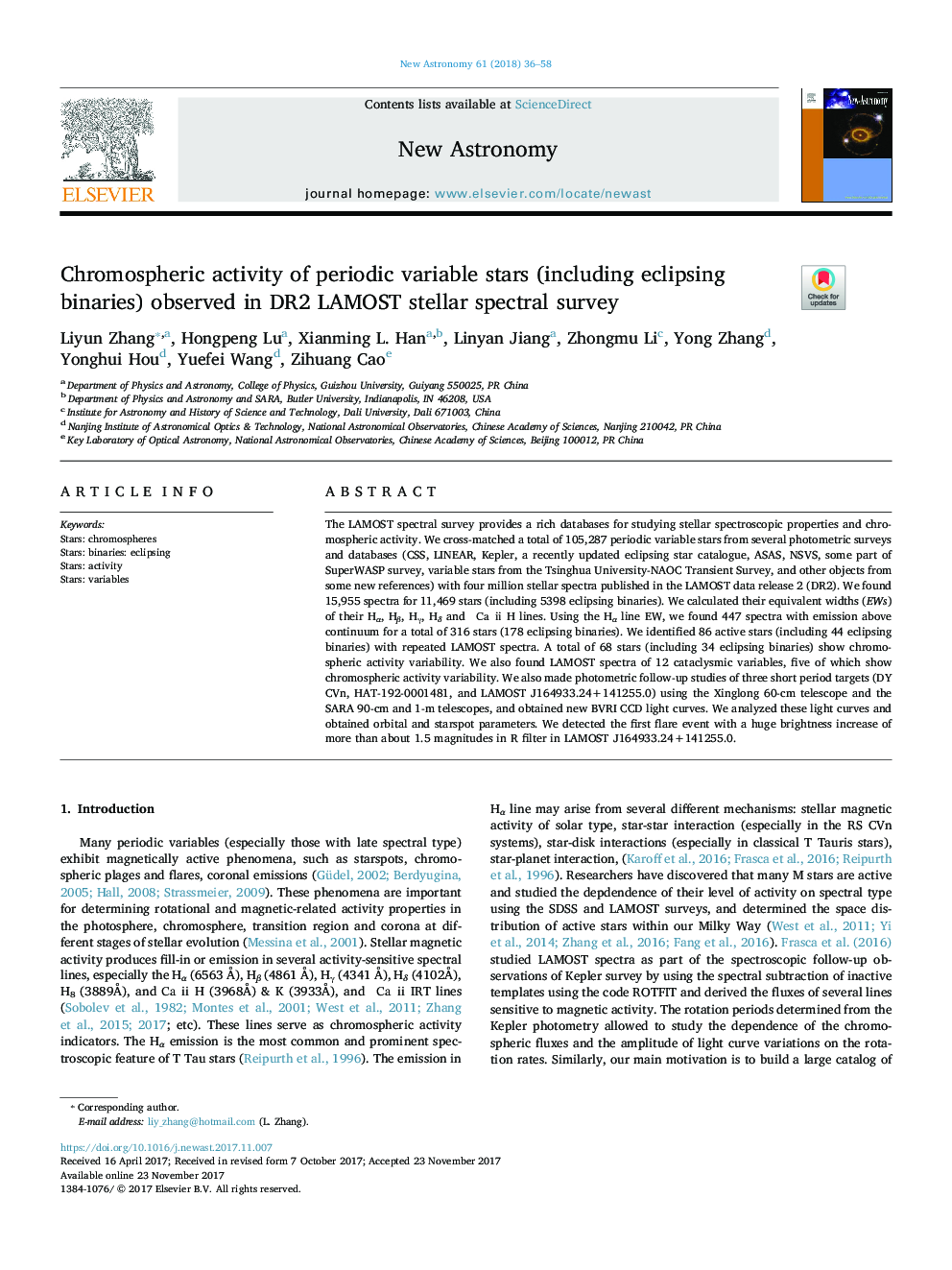| Article ID | Journal | Published Year | Pages | File Type |
|---|---|---|---|---|
| 8141389 | New Astronomy | 2018 | 23 Pages |
Abstract
The LAMOST spectral survey provides a rich databases for studying stellar spectroscopic properties and chromospheric activity. We cross-matched a total of 105,287 periodic variable stars from several photometric surveys and databases (CSS, LINEAR, Kepler, a recently updated eclipsing star catalogue, ASAS, NSVS, some part of SuperWASP survey, variable stars from the Tsinghua University-NAOC Transient Survey, and other objects from some new references) with four million stellar spectra published in the LAMOST data release 2 (DR2). We found 15,955 spectra for 11,469 stars (including 5398 eclipsing binaries). We calculated their equivalent widths (EWs) of their Hα, Hβ, Hγ, Hδ and Caii H lines. Using the Hα line EW, we found 447 spectra with emission above continuum for a total of 316 stars (178 eclipsing binaries). We identified 86 active stars (including 44 eclipsing binaries) with repeated LAMOST spectra. A total of 68 stars (including 34 eclipsing binaries) show chromospheric activity variability. We also found LAMOST spectra of 12 cataclysmic variables, five of which show chromospheric activity variability. We also made photometric follow-up studies of three short period targets (DY CVn, HAT-192-0001481, and LAMOST J164933.24+141255.0) using the Xinglong 60-cm telescope and the SARA 90-cm and 1-m telescopes, and obtained new BVRI CCD light curves. We analyzed these light curves and obtained orbital and starspot parameters. We detected the first flare event with a huge brightness increase of more than about 1.5 magnitudes in R filter in LAMOST J164933.24+141255.0.
Related Topics
Physical Sciences and Engineering
Physics and Astronomy
Astronomy and Astrophysics
Authors
Liyun Zhang, Hongpeng Lu, Xianming L. Han, Linyan Jiang, Zhongmu Li, Yong Zhang, Yonghui Hou, Yuefei Wang, Zihuang Cao,
